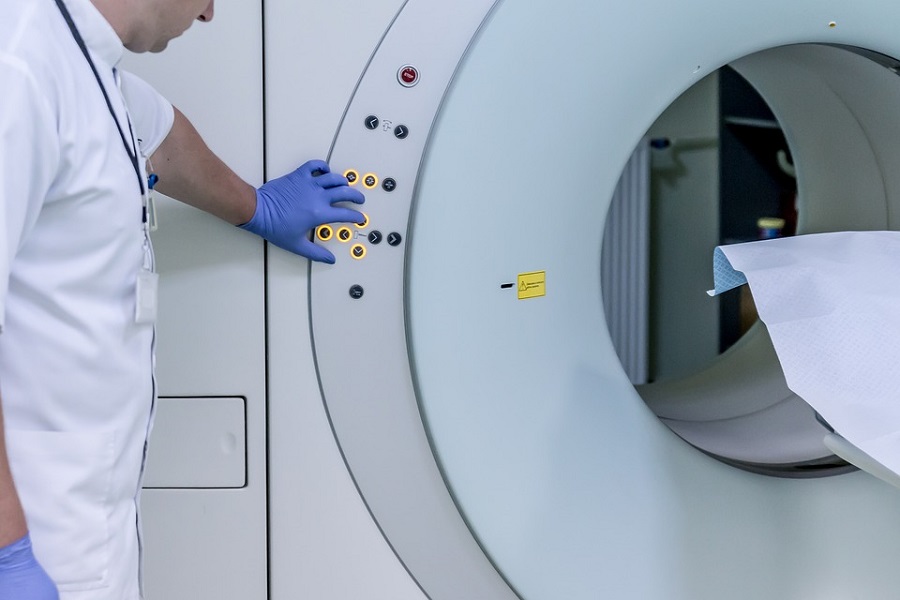
Global guidelines on managing the care of patients diagnosed with common types of adrenal tumours should be updated, say researchers following a study carried out by an international collaboration.
The research, a systematic review and meta-analysis published in Annals of Internal Medicine, is a collaboration between the University of Birmingham – part of Birmingham Health Partners (BHP) in the UK – and the Mayo Clinic in the US. It was supported by the National Institute for Health Research Birmingham Biomedical Research Centre.
The researchers reviewed 32 studies reporting the outcomes of more than 4,000 patients who had non-cancerous tumours that were classed as either non-functioning adrenal tumours (NFAT) or tumours causing mild autonomous cortisol excess (MACE).
Adrenal tumours are found in the adrenal glands, part of the body’s endocrine system, which releases hormones to the blood system that play a key role in how bodies process nutrients, respond to stress and regulate sexual development and function.
There are two adrenal glands, one on the top of each kidney. A major hormone released by the adrenals is cortisol, a hormone that helps to regulate blood pressure, metabolism and the body’s reaction to stress. While having severe excess cortisol levels – a condition known as Cushing’s syndrome - is rare, mild cortisol excess such as in MACE is much more frequent.
University Hospitals Birmingham NHS Foundation Trust, also part of BHP, has one of the largest clinical adrenal tumour services in the UK. It has particular expertise in managing patients with adrenal cancer and patients with adrenal tumours causing cortisol excess. Similarly, the Mayo Clinic provides one of the largest adrenal tumour services in the US.
Dr Yasir Elhassan, Clinical Lecturer in Endocrinology and Diabetes at the University of Birmingham, explained: “The rate at which adrenal tumours are detected is increasing due to widespread use of imaging techniques such as ultrasounds, MRI and CT scans, and it is estimated that around five per cent of the global population harbours an adrenal tumour, though most do not know about it until it is discovered incidentally by a scan.
“However, while common, most adrenal tumours are benign, but it is important to determine which, if any, will develop into something more serious, such as cancer or Cushing’s syndrome.
"Currently, the typical approach to treating patients with adrenal tumours is to remove them surgically if there is severe hormone overproduction or suspicion of cancer. Those that are NFATs do not require surgery, however there are some reports that these evolve to adrenal cancer.
“Therefore, whether these patients should undergo long-term follow-up is debatable, because this would represent a substantial health economic burden and could increase radiation exposure if patients undergo repeated imaging.
“There is also a concern that MACE may evolve into overt Cushing’s syndrome with all its complications, such as high blood pressure, obesity, diabetes and increased risk of death. However, whether these tumours should be surgically removed is controversial due to limited research evidence.”
Currently, guidelines from the National Institutes of Health and the American Association of Clinical Endocrinologists recommend repeated imaging and hormonal assessment for up to five years for patients with non-cancerous tumours without excess hormone secretion.
Meanwhile, recent European guidelines discourage repeated imaging and hormonal assessment but recommend annual screening for MACE tumours by blood tests measuring cortisol to look at whether MACE evolves into severe cortisol excess.
Dr Irina Bancos, of the Mayo Clinic, added: “These considerable differences in recommendations reflect the inadequacy of evidence that informs guidelines therefore we set out to provide new evidence to determine how many NFAT and MACE tumours increase in size and how often they can cause severe cortisol excess or develop into cancerous tumours.”
The research team found that only 2.5% of the 4,000 NFAT and MACE patients’ tumours grew by 10mm or more over an average follow-up time of 41.5 months following diagnosis. This suggests that most NFATs and MACE tumours do not show a clinically significant increase in size during follow-up.
Importantly, they also found that none of the 4,000 patients went on to develop adrenal cancer. They also found that development of overt Cushing’s syndrome during follow-up does not occur, neither in patients with NFAT or MACE. Finally, they found that patients with NFAT, but in particular patients with MACE, presented with a high prevalence and incidence of cardiovascular illness or death.
Professor Wiebke Arlt, Director of the University of Birmingham’s Institute of Metabolism and Systems Research, said: “Our findings suggest that once patients have been diagnosed with non-cancerous NFAT and MACE tumours, they should not undergo repeated follow-up imaging as the risk of NFAT and MACE tumours developing into cancer is vanishingly low and repeated imaging would expose patients unnecessarily to radiation.
“Repeated hormone testing is also not necessary as mild or absent hormone excess virtually never evolves into severe hormone excess. However, both patients with NFAT and those with MACE should have clinical check-ups in larger but regular intervals, paying attention to the patients’ metabolic health due to their increased risk of hypertension, type 2 diabetes, and cardiovascular disease.
“The European Society of Endocrinology clinical practice guideline currently recommends annual assessment for cortisol excess in patients with MACE, we would suggest this recommendation may need review and possibly revision in light of our findings.”
- Institute of Metabolism and Systems Research
- Follow the Institute of Metabolism and Systems Research on Twitter
- Follow the College of Medical and Dental Sciences on Twitter